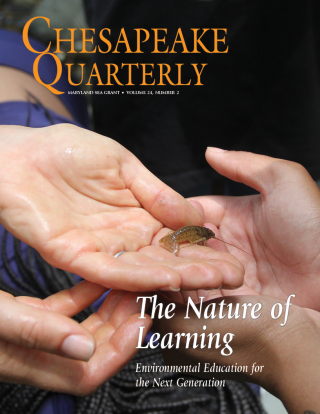Knauss legislative fellowships in Congress help build careers — and they're fun and educational. See our video and fact sheet for details.
The Maryland Sea Grant Bookstore will be closed for the winter holidays from Monday, December 15th to Friday, January 2nd and will not be taking orders during that time.
R/EH-3
What Happens After the Phragmites Is Killed? The Role of Native Plantings in Accelerating Post-treatment Recovery of Tidal Wetlands
Principal Investigator:
Dennis WhighamStart/End Year:
2020 - 2022Institution:
Smithsonian Environmental Research CenterCo-Principal Investigator:
Karen Kettenring, Utah State University; Melissa McCormick, Smithsonian Environmental Research Center; Andrew Baldwin, University of Maryland College ParkTopic(s):
- Ecosystems and Restoration
Strategic focus area:
Healthy coastal ecosystemsDescription:
A European haplotype of Phragmites australis (common reed) is an increasingly widespread invasive plant in Chesapeake Bay tidal wetlands. The spread of Phragmites has been promoted by disturbance and nutrient enrichment, resulting in threats to native plants and animals and triggering changes in ecological processes in wetlands. Cultural issues such as loss of vision-scape and access to water are important public concerns. Phragmites removal is possible but difficult, and thus is likely to be cost-effective over relatively small areas. Furthermore, the potential negative effects of Phragmites removal are poorly understood (e.g., wetland subsidence) and planting of native species that could speed the rate of ecosystem recovery following Phragmites removal has not been explored. The proposed research has three objectives: 1. Use experimental plantings to determine which native species provide the highest potential for restoration and carbon storage in wetlands with different salinity regimes, 2. Monitor vegetation where Phragmites has been removed over the past 15-20 years to quantify patterns of vegetation recovery in wetlands with different salinity regimes, and 3. Provide management agencies, institutions, civic organizations, and individuals with guidelines and protocols to effectively restore sites following Phragmites removal.Funding Start Year
2020
Funding End Year
2022





